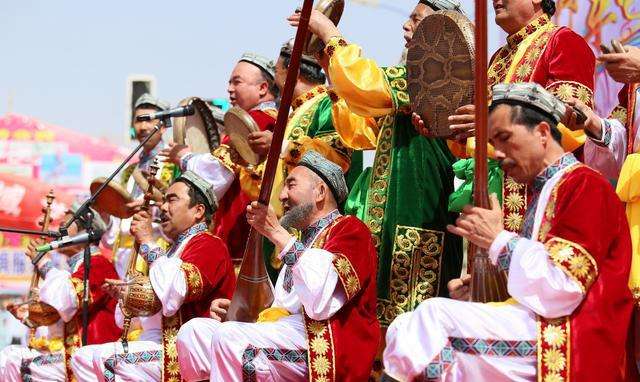Kashgar muqam
2 min readQong negme as the overture is composed of several narrative and chanting songs, pieces of instrumental music and dance music. Muqamgis (singers who can perform gong negme) focus on the psychological ideas and mental pursuit of the Uygurs. In the past it was exclusively enjoyed by the upper-class society and the intelligentsia. Its vigorous, deep and long-drawn-out melody flows slowly with free accented beats, telling the vicissitudes of the ancient times, which would move the listeners to tears. as the keynote of the mugam gong negme is the base and core of the tunes of the entire mugam Dastan as a long narrative poem is performed by dastangis(people good at singing dastan) in the form of talking and singing at teahouses, barbershops, restaurants and other public places and family gatherings. Dastan is performed with ease and grace and great power, as grand and magnificent as an epic. The tune can be rhythmic and sonorous, or plaintive and mournful History, human nature and love are narrated by the long river of nusic with ease.

Mashrap probably originated from some kind of religious ritual practiced by the Uygurs, namely a ritual of Shamanism in the oghuz Khan era. Komul kuoke mashrap is now regarded as the successor of this ancient ritual. Mashrap is kind of a party where everyone can sing and dance with abandon. It is performed by Negmeqis(folk singers) or Axiks(folk artists) in the form of singing alone or in company along streets and lanes, begging The performers sing and dance at the accompaniment of drum and gin mashrap is a vast cultural space for the Uygur ethnic group. It is a container of the Uygur art and the reflection of the life of people on the oasis. It is a door of culture where ethnic groups meet and go through. It is a carnival on the oasis, and an important lifestyle and cultural tradition of the Xinjiang oasis.









